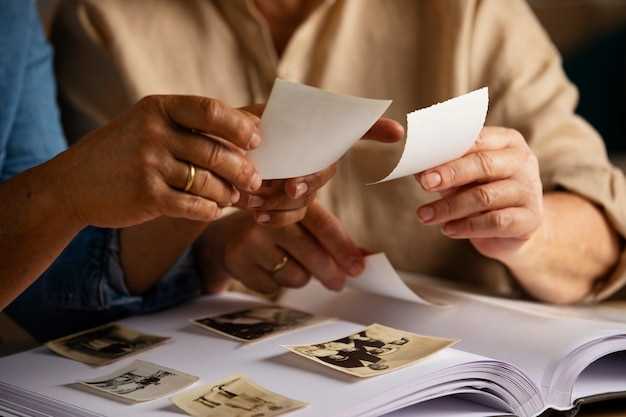
Every club has a rich history that informs its identity and mission. This legacy, shaped by the contributions of dedicated members over the years, creates a tapestry of experiences that deserves careful documentation and celebration. Understanding the importance of preserving this history not only honors past achievements but also fosters a sense of belonging among current and future members.
As clubs evolve, the stories and contributions of their members often risk being forgotten. By actively recording the milestones, events, and individual efforts that have defined the organization, clubs can maintain a living archive that inspires unity and commitment. This practice serves not only as a tribute to those who came before but also as a guiding light for future endeavors, ensuring that the club’s legacy endures through the generations.
In this article, we will explore practical strategies for effectively preserving club history and celebrating member contributions. From creating digital archives to commemorating significant achievements with public displays, we will outline the essential steps that every club can take to safeguard its rich heritage and maintain its vibrancy in the community.
Documenting Member Achievements and Milestones

In every club, the collective history is enriched by the achievements and milestones of its members. Recognizing and documenting these accomplishments is crucial for preserving the legacy of the club and fostering a sense of community among members. By creating a dedicated record of individual successes, clubs can highlight the contributions of their members and inspire future generations.
One effective method of documenting member achievements is through regular newsletters or bulletins that celebrate recent milestones. This can include awards, personal bests, or contributions to successful projects. By consistently featuring these highlights, clubs can maintain an ongoing narrative of their history, which not only honors the members but also keeps everyone engaged and informed.
Additionally, establishing a digital archive allows clubs to catalog achievements in a more organized manner. This can be implemented through a dedicated section on the club’s website or a shared online platform. Members can share their accomplishments, including photos, stories, and testimonials, ensuring that everyone’s contributions are recognized and remembered.
Acknowledgement during meetings or events also plays a vital role in documenting achievements. Special ceremonies can be held to honor members who have reached significant milestones, creating a supportive atmosphere that values individual contributions. This public recognition reinforces the club’s commitment to preserving its history and encourages others to strive for their own achievements.
Ultimately, documenting member achievements and milestones not only serves to archive the club’s history but also cultivates an inclusive and motivated environment that celebrates individual and collective successes.
Creating a Digital Archive for Club Records

Establishing a digital archive is essential for preserving the legacy of your club while ensuring that the contributions of its members are easily accessible. A well-organized digital archive serves as a repository of important documents, photographs, and multimedia elements that reflect the history and achievements of the club.
Here are some steps to create a comprehensive digital archive:
- Assess Your Needs:
Determine what types of records and materials are crucial for your club’s archive. Consider including:
- Meeting minutes and agendas
- Membership records
- Event photographs
- Newsletters and publications
- Awards and recognitions
- Choose a Storage Solution:
Select a reliable digital storage platform. Options include:
- Cloud storage services (e.g., Google Drive, Dropbox)
- Dedicated archiving software
- Your club’s website or a member portal
- Digitize Paper Records:
For existing physical documents, use scanning technology to create digital copies. Ensure that:
- All documents are legible and of high quality
- Files are saved in a consistent format (e.g., PDF, JPEG)
- Organize Files Systematically:
Create a structured filing system to simplify access. This could involve:
- Creating folders for different categories (e.g., Events, Membership, History)
- Naming files consistently for easy searching
- Establish Access Guidelines:
Determine who can access the digital archive and under what conditions. Consider:
- Setting permissions for different roles (e.g., members, officers)
- Establishing guidelines for archiving new records
- Encourage Contributions:
Foster a culture of participation by encouraging members to contribute to the archive. Utilize:
- Call for submissions of personal stories and memorabilia
- Promote the importance of maintaining a collective legacy
Creating a digital archive is a pivotal action to ensure that your club’s legacy is not only preserved but also celebrated. By following these steps, you can maintain a vital connection to the past while inspiring future generations of members.
Engaging Members in Legacy Projects and Storytelling
Engaging members in legacy projects and storytelling is essential for preserving your club’s history. Involving members in these initiatives not only strengthens bonds but also enriches the club’s narrative. Begin by identifying individuals passionate about documenting experiences and contributions. This can be achieved through workshops or brainstorming sessions where members share their stories and ideas.
Legacy projects can take various forms, such as creating a digital archive, compiling a club history book, or producing a documentary. Each project should be tailored to highlight significant events and contributions, ensuring that the essence of the club endures. Encourage members to contribute photographs, written anecdotes, or even interviews that encapsulate their journey within the club. This collaborative approach fosters a sense of ownership over the club’s legacy.
Storytelling is a powerful way to connect past and present members. Organize storytelling nights where individuals can share their experiences, fostering an inclusive environment. These events not only allow for the sharing of memories but also showcase the club’s evolution through different perspectives. Document these stories through video recordings or written formats to create a rich tapestry of the club’s history.
Involve members in decision-making processes regarding which historical aspects to highlight. This boosts engagement and ensures that the club’s narrative feels relevant to all members. Regularly revisit and update projects, allowing new contributions to be incorporated. By continually engaging members in legacy projects and storytelling, you ensure the club’s history remains vibrant and deeply connected to its members.


